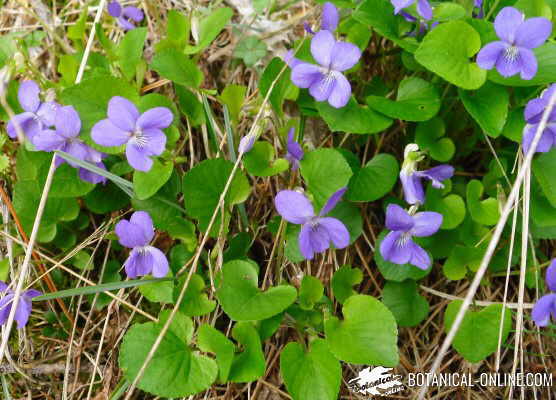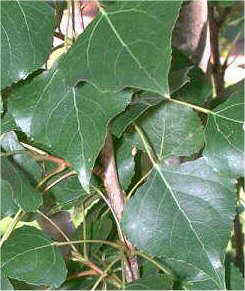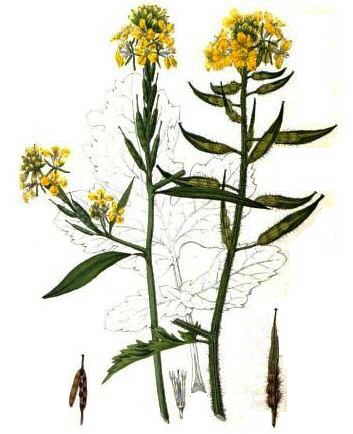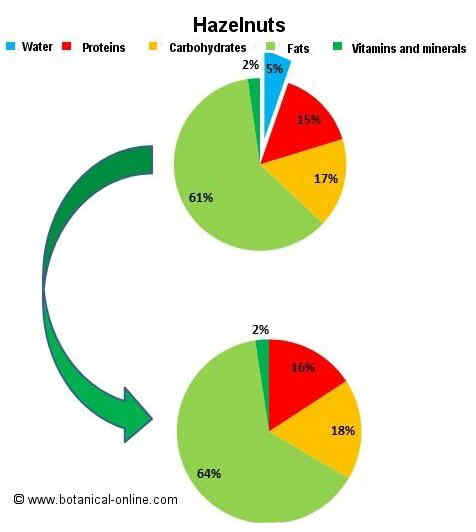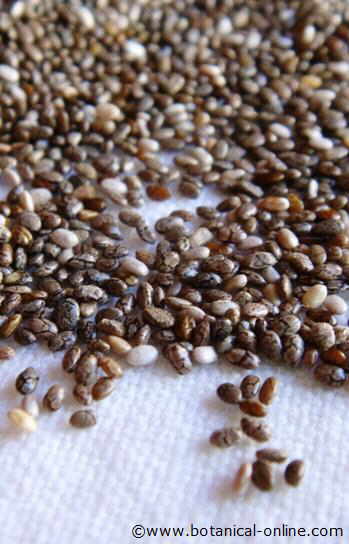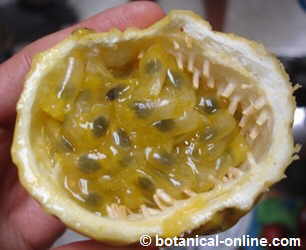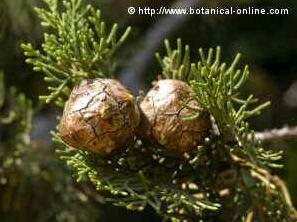Contents
Types of simple carbohydrates
SIMPLE CARBOHYDRATE CLASSES
How are simple carbohydrates divided?
Carbohydrates are divided into simple carbohydrates and complex carbohydrates.
From a scientific standpoint, simple carbohydrates are exclusively made up of simple sugar molecules. They are known as monosaccharides. Monosaccharides are simple carbohydrates. They contain between 3 and 6 carbon atoms. They are characterized by not decomposing in simpler elements, that is to say they do not not hydrolyze.
From a dietary standpoint, monosaccharides (single sugar molecule) and disaccharides (consisting of two simple sugar molecules together) can be considered as simple carbohydrates. Disaccharides hydrolyze (break down), producing two monosaccharides.
Carbohydrates belonging to monosaccharides
Among the major simple carbohydrates belonging to monosaccharides we have the following:
- Trioses (monosaccharides with 3 carbon atoms) the representative of this group is the Glyceraldehyde
- Tetroses (monosaccharides with 4 carbon atoms) Among them we have the erythrose and threose
- Pentoses (monosaccharides with 5 carbon atoms) Among them we have:
- Ribose: It is a very important monosaccharide because it is part of our genetic material. The form of dribose is used as a nutritional supplement to increase strength and endurance in athletes. Also used in the natural treatment of fibromyalgia and chronic fatigue syndrome.
- Xylose: Known as “wood sugar.” Since xylose is a villain which is one of the main components of hemicellulose, a complex carbohydrate that is part of the plant cell. Xylose is used in medicine to test the absorption of food in the gut.In industry, xylitol is obtained from it, which is used as sugar because it does not cause cavities.
From a standpoint of herbal medicine it is believed that this component has antidiabetic properties. Carob beans or fruits of the carob tree (Ceratonia siliqua) and the leaves of the wild pine (Pinus sylvestris) are rich in this component.
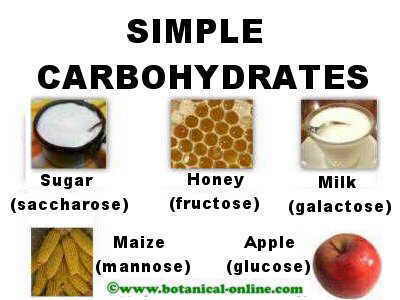 Some food with simple carbohydrates
Some food with simple carbohydrates- Hexoses (monosaccharides with 6 carbon atoms) Among them we have:
- Glucose: It is the more important simple carbohydrate with this formula: C6H12O6. The human body and the brain use it for energy. It can be found in fruits and honey. It is absorbed very quickly. (See food high in glucose list)
- Fructose: Known as “fruit sugar”. It is a very important monosaccharide, given the large number of foods that contain it (honey, fruits and root vegetables in particular). It dissolves slightly in water and it is very sweet. In fact it is the natural carbohydrate that has more sweetness, surpassing sucrose (cane or beet sugar).
For this reason, it is advisable to use this as a sweetener instead of “normal” sugar since it requires less quantity to get the same taste, and with fewer calories. Like glucose, it is ingested directly. It has also been used as sugar for diabetes because it was assumed that it did not stimulate the production of insulin. (More information on fructose)
- Mannose: It is a simple carbohydrate. It is formed from the mannitol or glucose. Unlike the latter, it is very poorly absorbed so that virtually all excreted in the urine. It is used as a therapeutic remedy for treating cystitis. One of the plants that contain this component is the maize.
- Galactose: Simple carbohydrate less sweet than glucose. Appears in the milk combined with sugar and other complex carbohydrates. Poor metabolism of this type of sugar produces a metabolic disorder called galactosemia
Galactosemia occurs as a result of the lack of the enzyme galactose-1-phosphate uridyltransferase which prevents galactose or milk sugar being digested. This causes an excessive accumulation of it in the body.
It affects infants within a few days of birth. At first , they did not show problems, but then begin to show symptoms of this metabolic disorder, jaundice, vomits, poor weight gain, enlarged liver, etc.
Carbohydrate belonging to disaccharides
Among the major carbohydrate belonging to disaccharides we would include the following:
- Sucrose: It is what is commonly known as table sugar. It is a white crystalline component, sweet and odorless. Is a disaccharide formed by the union of glucose and fructose with formula C12H22O11. It is a product that the plants produce during photosynthesis. Industrially, it is mainly obtained from sugar cane and sugar beet.It is the most consumed sweetener in the world, especially in its refined form. Like other sugars, it turns into glucose which is transported by the blood.
From a dietary point of view its abuse has been linked to the onset of many disorders, such as decay, obesity, gout, cardiovascular problems or diabetes. (See foods high in sucrose)
- Lactose: It is thee sugar found in the milk from mammals. In the case of cow’s milk, it accounts for 4.5%, in the case of human milk, 6%. It consists of galactose and glucose and has the formula C12H22O11.In the human intestine it is digested by the enzyme lactase which is what makes the decomposition of the disaccharide into two simple sugars, glucose and galactose.
As people get older, the production of the enzyme lactase decreases and it is more and more difficult to digest lactose. This can cause problems of malabsorption or intolerance, which may be the cause of many problems of abdominal pain, gas, diarrhea and other symptoms related to a poor digestion of milk.
- Maltose: It is malt sugar. It is formed by two glucose units and has an aspect of white crystalline powder. It is obtained mainly from the germination of cereals during the process of brewing from barley. In the countries of South Asia is widely used as a sweetener. It is less sweet than sucrose or glucose.
![]() More information on carbohydrates.
More information on carbohydrates.

